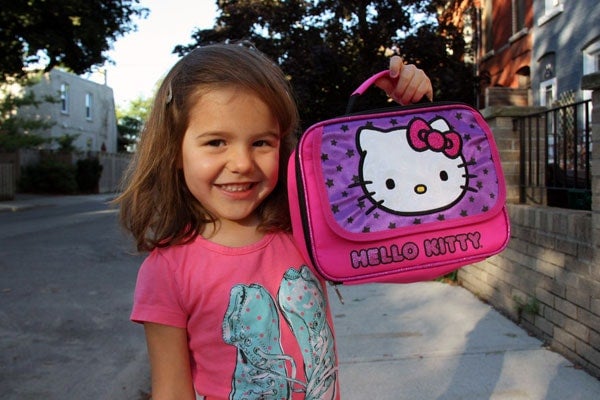
Back to School: how to create a healthy lunch
Published: September 10, 2014
What is a healthy lunch for your child? And how can you encourage your kid to eat the lunch you pack or put on the table?
These are two of the most vexing questions parents face, as they get their kids ready for school each day, so writer Jim Oldfield consulted an expert at the University of Toronto for ideas on how you can meet the nutritional needs of your child at midday.
Step one is figuring out what makes up a healthy lunch. A good place to start is the Canada Food Guide, says Deborah O’Connor, a professor in the department of nutritional sciences at U of T and a researcher in the Centre for Child Nutrition, Health and Development.
“Look at the Canada Food Guide and include something from at least three of its four food groups in your child’s lunch,” says O’Connor. “The idea is to create balance by drawing on the four groups, and try to introduce some variety every day.”
This could include pepper strips, whole-grain crackers and a hard-cooked egg one day, for example, and zucchini sticks, cheese cubes and sliced ham the next.
EatRight Ontario and Dietitians of Canada are also great resources for nutrition information, and both sites have lots of ideas on how to add variety to healthy lunches. Remember that although kids’ tastes change quickly, they often have to try foods several times before they like them.
“Some kids are easier than others, but many studies show that young children have to taste foods 10 or 15 times, or more, before they develop a taste for them,” says O’Connor, who is also a clinical dietitian and senior associate scientist at SickKids.
Step two is determining portion size, and here the Canada Food Guide site for children can help. It suggests age-appropriate portions from each food group over a day, along with sample menus. (See the EatRight Ontario page on portion sizes for tips on how to visually estimate serving size.)
Parental concern does not end with a well-planned lunch, however. Perhaps the biggest challenge is helping your child establish good eating habits – so he or she will eat what you’ve prepared at home or put in a lunch pack.
“Without question, most kids need years of guidance and encouragement to eat well,” says O’Connor. “But there are some well-established strategies that work even with the pickiest eaters.”
Probably the most important thing is to be a good role model, says O’Connor. She points out that kids like to do what their parents do, so if parents don’t prepare and eat healthy food at home, or they talk about grabbing a fast-food lunch at work, they shouldn’t expect different behaviour from their child. Menu planning a couple of days or even a week ahead can really help busy families keep cooking.
It’s also important to get your kids involved in cooking, says O’Connor. Most children love the textures, aromas and colours of the kitchen. They’re often happy to wash, cut and get creative with vegetables, fruit and other healthy whole foods. “Take you kids shopping for groceries or get them into an edible garden, so they develop an interest in where food comes from.”
Finally, don’t be a pedant. “A lot of research suggests that an overly-restrictive stance on a children’s diets can backfire. Leave the junk at the store, put good food in front of them and let them decide what and how much to eat,” says O’Connor.
Jim Oldfield is a writer with the Faculty of Medicine at the University of Toronto.



